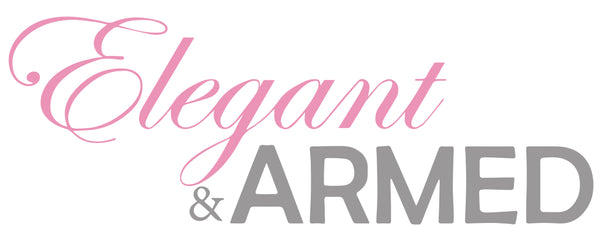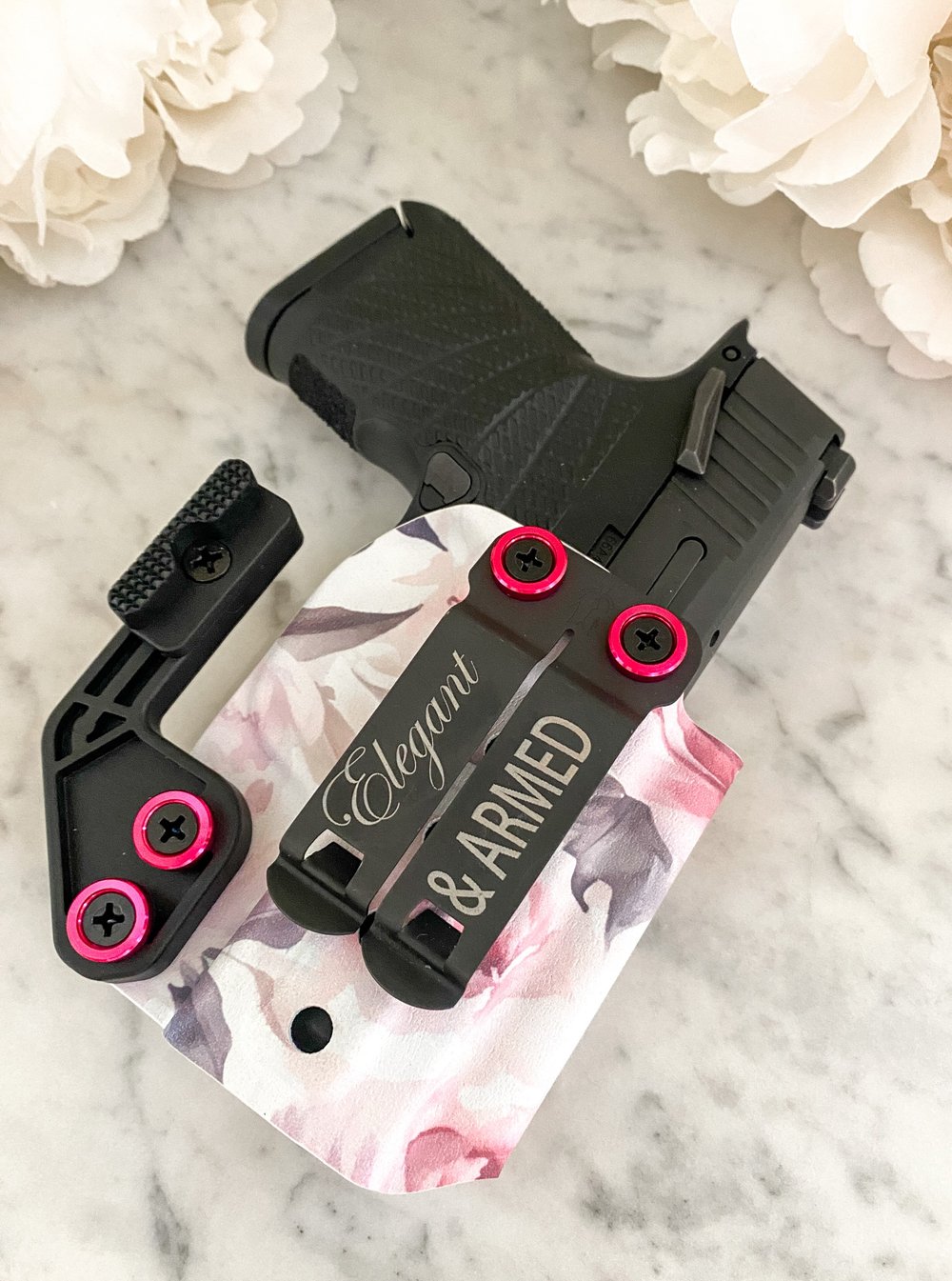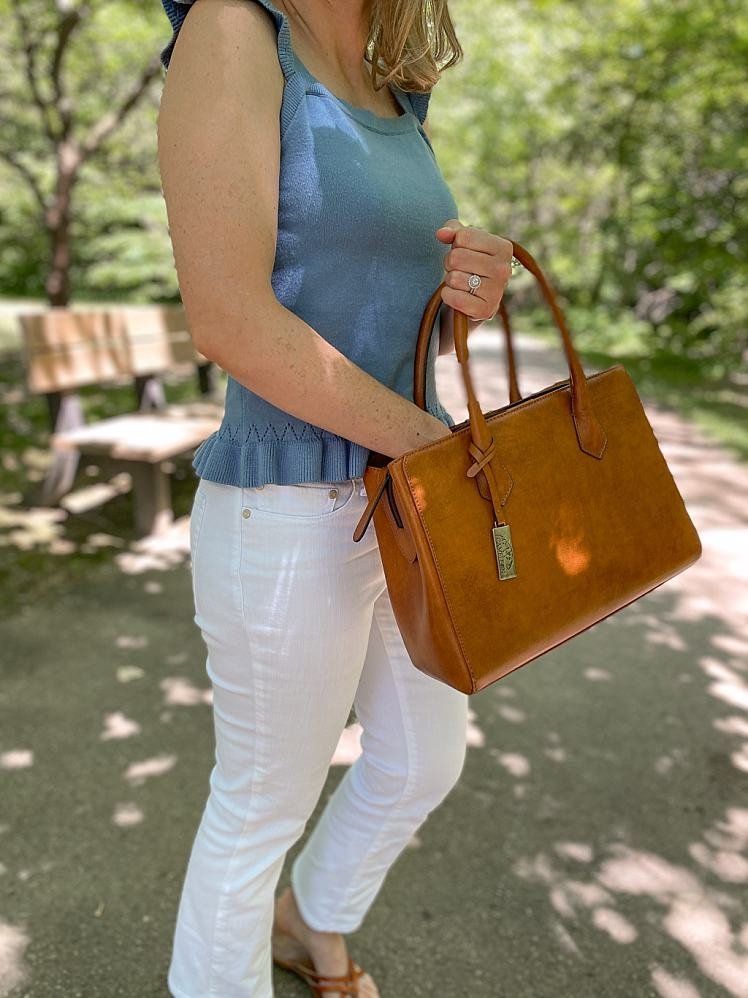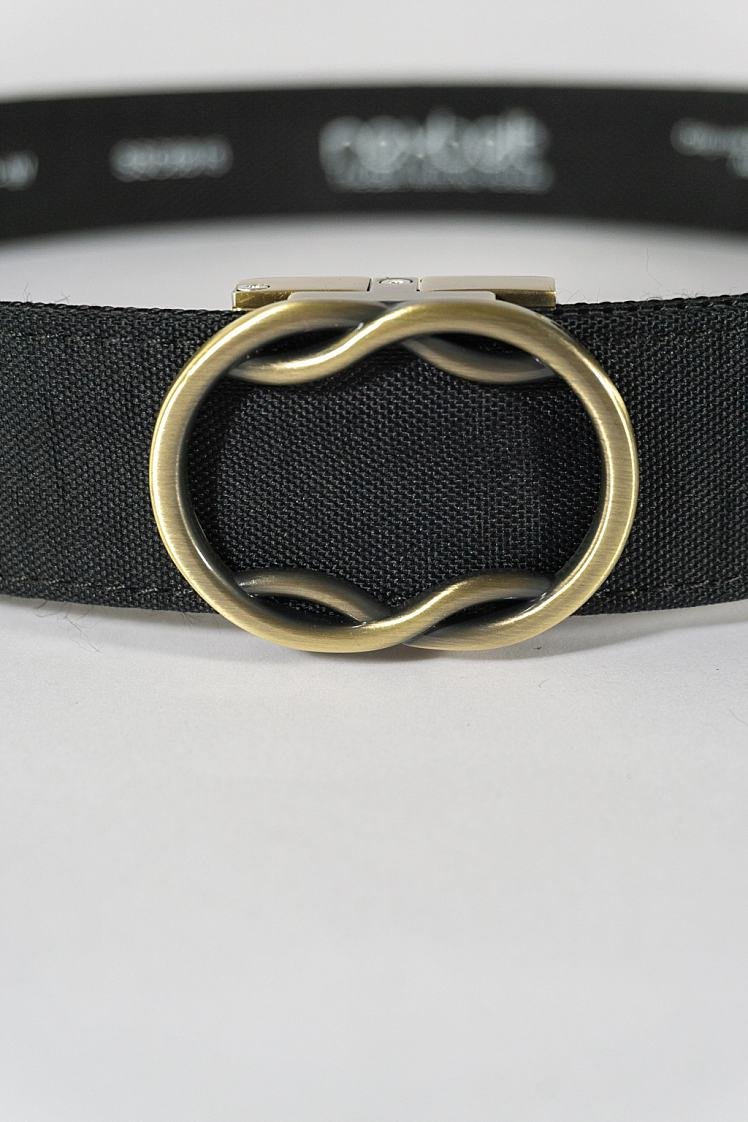Game Changing Tip About Grip – How to Grip the Gun
Share
Table of Contents:

I learned a game changing tip about grip this summer that has affected my recoil management, trigger pull, and accuracy. But before I explain the easy tip, here’s how I was previously taught to grip a firearm.
 LEFT: Grip without training. Low hand placement RIGHT: my grip after training. High hand placement for more control.
LEFT: Grip without training. Low hand placement RIGHT: my grip after training. High hand placement for more control.
When I first started shooting , my hand placement was low on the gun and, as a result, I didn’t have much control over recoil. I’m grateful for Chris Cerino from Cerino Training Group, who taught me the fundamentals of a good grip, which made noticeable improvement in my shooting .
The concept “clicked” when he had our class practice grip with a pair of spring-loaded pliers and a stress ball.

Use a spring-loaded pair of pliers or shears to feel how the dominant hand should grip the gun. I didn’t have a spring-loaded pair of pliers, but this kitchen tool works similarly.
- Think about how squeezing spring-loaded pliers is different from gripping the rounded handle of a hammer. Instead of putting pressure all the way around the handle, there’s more of a front to back pressure. This is the motion your strong hand should mimic when gripping the gun.

Squeeze a stress ball or tennis ball to train your support hand to grip the gun.
2. Next imagine you are at the range, facing a target. Hold a stress ball with your support hand and extend your arm while pointing your thumb towards the target. As you squeeze the ball, wrap your four fingers towards the sky which will turn the palm of your clenched hand towards the sky. Your thumb should still be pointing at the target at this point. This is how your support hand should feel when gripping the firearm.
The Grip
 The webbing between your thumb and index finger should be as high on the backstrap of the gun as possible.
The webbing between your thumb and index finger should be as high on the backstrap of the gun as possible.
As you grip the gun with your dominant hand, the webbing between your thumb and index finger should be as high on the backstrap of the gun as possible. Grip the handle with the front to back movement like you did with the pliers. Your thumb can stick out like a hitch hiker’s thumb and it doesn’t need to squeeze. This creates a space for your support hand.
 Your thumb should run horizonal on the frame just below the slide. The thumb on your dominant hand can rest just above your support hand thumb.
Your thumb should run horizonal on the frame just below the slide. The thumb on your dominant hand can rest just above your support hand thumb.
Think about the stress ball as you wrap your support hand around the gun. The support hand fingers lay over top of the dominant hand fingers but below the trigger guard. Think about getting as much of your thumb (and palm at the base of your thumb) on the frame as possible. Your thumb should run horizonal on the frame just below the slide. The more your hand touches the gun, the more control of the gun you’ll have. At this point, the thumb on your dominant hand can rest just above your support hand thumb.
Picturing the grip in this way has been extremely helpful for placing my hands, but I still struggled with recoil management and knowing how tight to squeeze the gun. I was squeezing everything as hard as I could; hands, arms and shoulders, which made me very tense. The recoil may not have pushed me backwards, but I was breaking at the wrist and the muzzle of the gun was bouncing up quite a bit.
Game Changer
This brings me to what I learned this summer from Achilles Tactics. It’s so simple - grip tightest with your pinky finger. This will help control recoil by keeping the muzzle from bouncing up.
That’s right, of all the fingers, squeeze tightest with the smallest finger of the dominant hand. When I do this, it almost feels like the middle three fingers are relaxed. You have to wonder, will that grip work?

Trying to pull my hand away while my partner grips with his pinky finger.
As a demonstration, we grasped hands with a partner and took turns trying to pull our hand away. First, we gripped our partner’s hand without using our pinky and it was easy to break free. However, when we used only our pinky, it was almost impossible. So it turns out, this technique does produce a very strong grip and helps prevent your firearm from angling upward during recoil.
It seems so simple, but sometimes a small change can have a big impact on how well you shoot. Grip is very fundamental, and it affects multiple elements of your shooting technique, so in my next post I’ll talk about how this pinky grip can affect how you pull the trigger.





